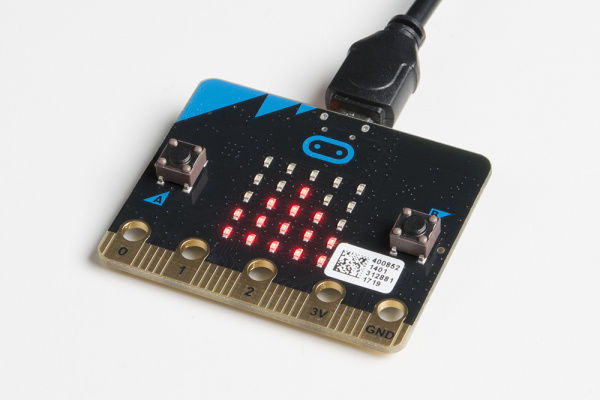Getting Started with the micro:bit
Contributors:
 D___Run___, Ell C
D___Run___, Ell C
Resources and Going Further
Note: If you modified the firmware on the micro:bit and have issues uploading code with MakeCode, try reinstalling the firmware.
micro:bit Foundation: Updating your micro:bit firmware
Now that you are familiar with the basics of the micro:bit, check out these additional resources for more inspiration!
- microbit.org
- About micro:bit - Information about the micro:bit foundation.
- Hardware - Technical and compliance information.
- Quickstart Guide - Additional getting started guides from the micro:bit foundation.
- Activities - Projects from the micro:bit website.
- Projects - Projects that you can build with your micro:bit.
- Apps - The micro:bit apps let you send code to your micro:bit wirelessly using Bluetooth. No leads needed! This also includes a list of other programming environments for the micro:bit.
- Educator Teaching Resources - Resources for educators. Classroom oriented activities based on the micro:bit.
- Code Club Activities - 6 activities from Code Club to try out!
- BBC micro:bit - Kitronik University - More micro:bit tutorials.
- Kitronik's Guide to micro:bit vs micro:bit v2
- Fritzing Part - For the red colored Fritzing part used in the tutorials, check out the user contributed part linked in this repository!
- SparkFun micro:bit Landing Page
Looking for additional project ideas using just the micro:bit? Check out micro:climate kit's reading light levels experiment:
 |
| micro:climate Experiment 2 - Reading Light Level |
For additional SparkFun tutorials, check out some of these related micro:bit tutorials:
micro:bot Kit Experiment Guide
Get started with the moto:bit, a carrier board for the micro:bit that allows you to control motors, and create your own robot using this experiment guide for the micro:bot kit.
Gator:control ProtoSnap Hookup Guide
Buttons and switches and inputs oh my! Start adding more control to your gator:bit with the SparkFun gator:control.
SparkFun gator:microphone Hookup Guide
The gator:microphone is an I2C sensor for detecting sound with an electret microphone. This tutorial will get you started using the gator:microphone with the micro:bit platform.
How to Create a MakeCode Package for Micro:Bit
Learn how to develop code blocks for the Micro:bit in Microsoft MakeCode!
Check out Shawn's 4-part video series with the micro:bit. The projects have examples that use the accelerometer, combines the servo and temperature example, and sends a bluetooth message between two micro:bits. There are two additional videos using micro:bit with MicroPython. Or try exploring micro:bit with cardboard circuits!